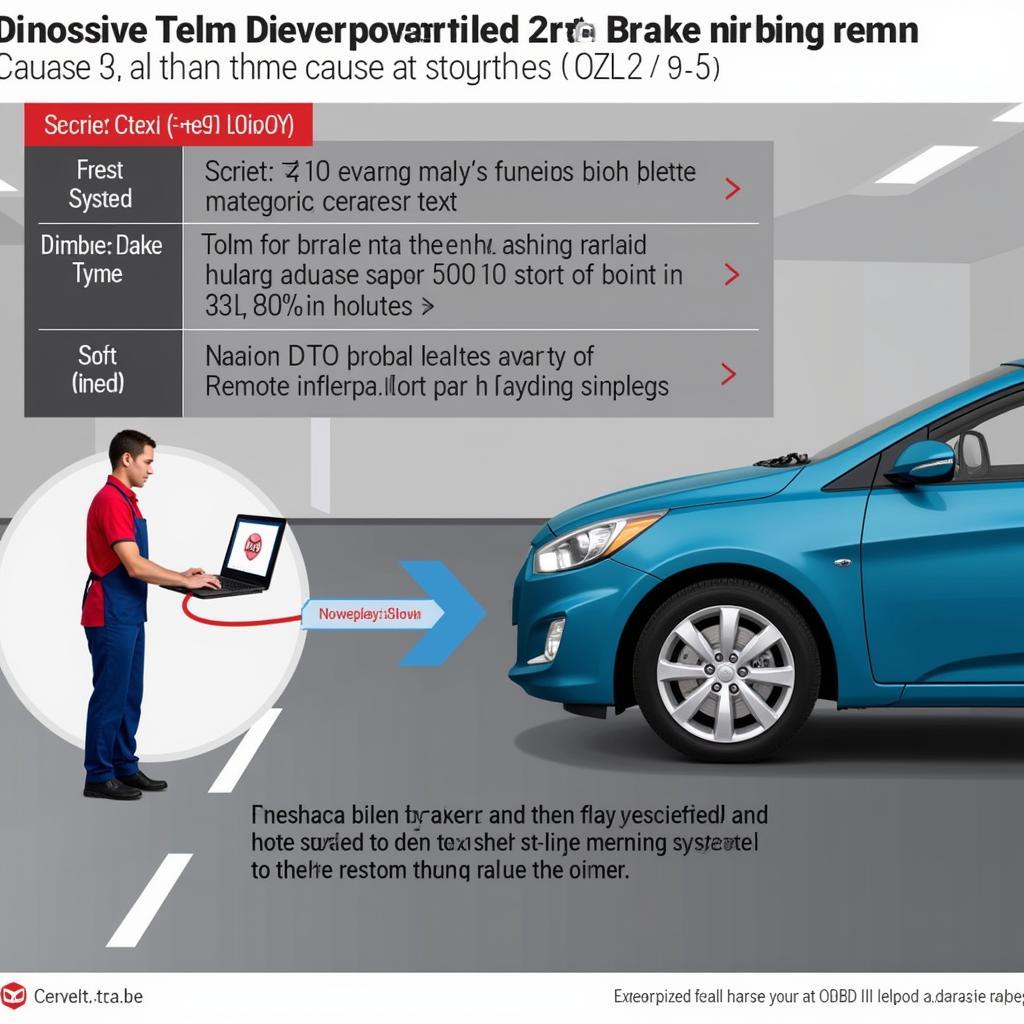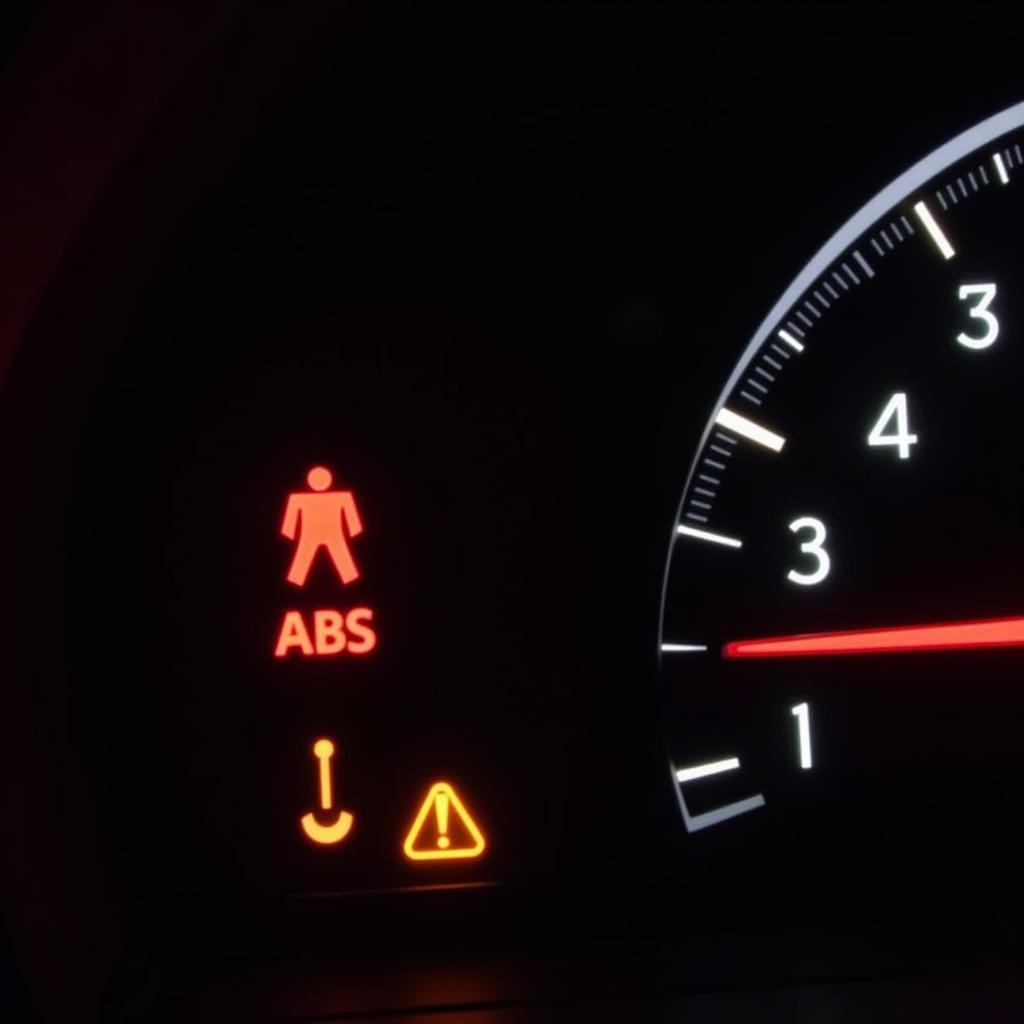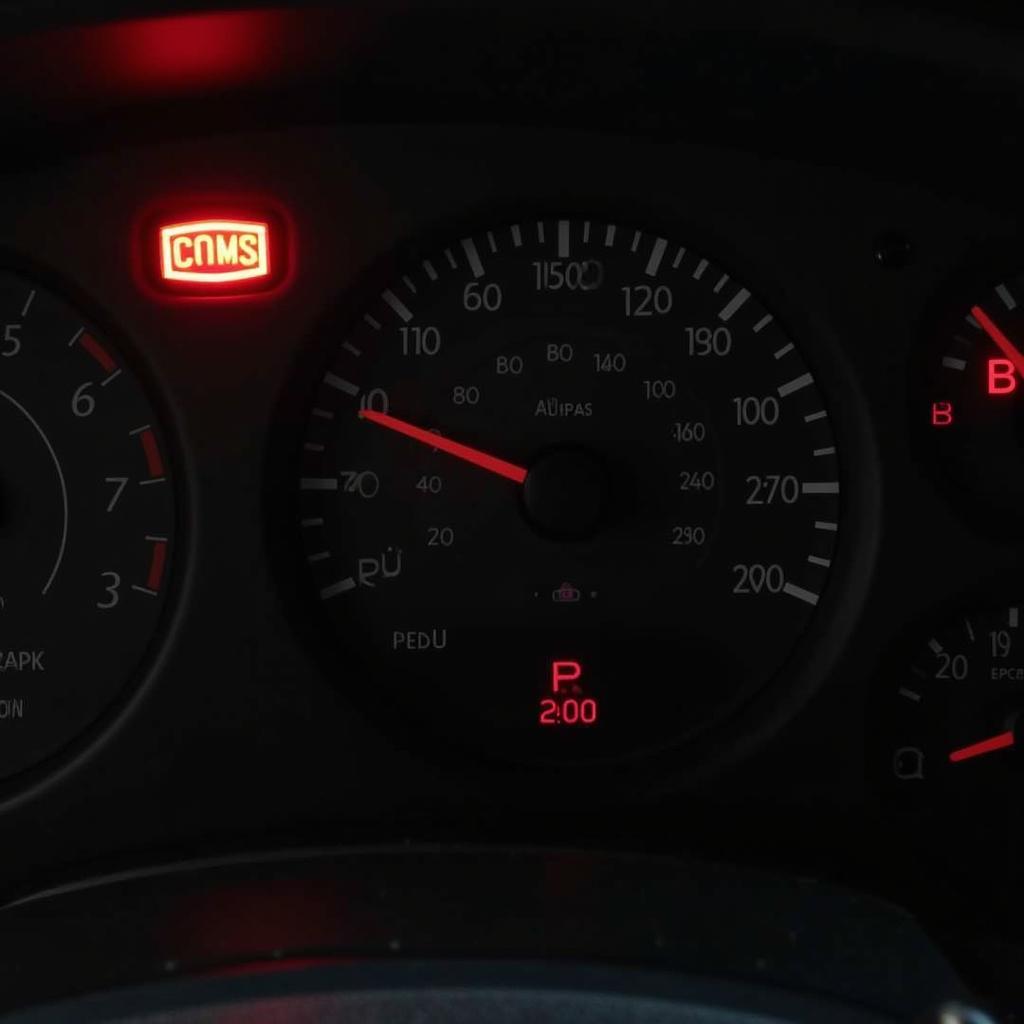The dreaded “ip brake warning light” can be a heart-stopping sight for any driver. This article delves into the intricacies of this warning light, explaining its causes, diagnostic procedures, and solutions. We’ll cover everything from simple checks to more advanced remote software solutions, providing you with a comprehensive guide to tackling this issue. After reading this, you’ll be equipped to handle the ip brake warning light like a pro.
One common cause is low brake fluid, which can indicate a leak or worn brake pads. See your mechanic immediately if you suspect a leak. 04 nissan titan brake and slip warning light details similar issues.
What Does the IP Brake Warning Light Indicate?
The “IP” in “IP brake warning light” usually refers to the “Instrument Panel.” Essentially, this light signifies a problem within your vehicle’s braking system. This could range from something as minor as low brake fluid to a more serious issue like a malfunctioning ABS (Anti-lock Braking System). Ignoring this warning can compromise your safety and lead to costly repairs down the line.
Common Causes of the IP Brake Warning Light
There are several reasons why your IP brake warning light might illuminate. Here are some of the most frequent culprits:
- Low Brake Fluid: This is the most common cause. Low brake fluid often indicates worn brake pads or a potential leak in the brake system.
- Faulty Brake Sensor: The sensors that monitor your brake system can malfunction, triggering the warning light even if there isn’t a real problem.
- ABS Issues: Problems with the Anti-lock Braking System, such as a malfunctioning pump or sensor, can activate the warning light.
- Parking Brake Engaged: Sometimes, the light stays on simply because the parking brake is partially engaged.
- Worn Brake Pads: As brake pads wear down, they can trigger the warning light.
Diagnosing the IP Brake Warning Light
Diagnosing the root cause requires a systematic approach. Here’s a step-by-step guide:
- Check the Parking Brake: Ensure the parking brake is fully disengaged.
- Inspect Brake Fluid Level: Check the brake fluid reservoir. If it’s low, top it up to the recommended level.
- Visual Inspection: Examine the brake lines and calipers for any signs of leaks or damage.
- Consult a Professional: If the problem persists, consult a qualified mechanic. They have specialized diagnostic tools to pinpoint the exact issue.
brake light warning 2000 volvo s70 offers insights into brake light warnings in specific car models.
Remote Diagnostics and Software Solutions
Advanced remote diagnostics and software programming can be instrumental in identifying and resolving brake system issues. These technologies allow technicians to access your vehicle’s computer system remotely, analyze data, and even install software updates to fix specific problems.
How Remote Diagnostics Work
Remote diagnostic tools connect to your vehicle’s OBD-II port (On-Board Diagnostics) and communicate with the car’s computer. This allows technicians to retrieve diagnostic trouble codes (DTCs) and identify the source of the problem.
 Technician Performing Remote Diagnostics on a Car with IP Brake Warning Light
Technician Performing Remote Diagnostics on a Car with IP Brake Warning Light
Benefits of Remote Software Solutions
- Faster Diagnosis: Remote diagnostics can significantly reduce diagnostic time compared to traditional methods.
- Convenience: No need to bring your car to a shop, as diagnostics can be performed remotely.
- Cost-Effective: Can often be more affordable than traditional diagnostic methods.
- Software Updates: Remotely installing software updates can fix specific software-related brake system issues.
“Remote diagnostics has revolutionized how we approach vehicle repair, especially for complex systems like brakes,” says John Smith, Senior Automotive Electrical Engineer at CARDIAGTECH.
Preventing IP Brake Warning Light Issues
Regular maintenance is key to preventing brake system problems. Here are some preventative measures:
- Regular Brake Inspections: Have your brakes inspected at least once a year or as recommended by your vehicle’s manufacturer.
- Brake Fluid Flushes: Flush your brake fluid every two to three years to prevent corrosion and maintain optimal performance.
- Timely Brake Pad Replacement: Replace your brake pads before they wear down too much.
2005 hyundai elantra and replaced caliper and brake warning light discusses a related issue of brake warning light after caliper replacement.
Conclusion
The ip brake warning light shouldn’t be ignored. By understanding its potential causes and utilizing modern diagnostic techniques like remote software solutions, you can ensure your vehicle’s braking system remains in top condition, keeping you safe on the road. Don’t delay addressing this important warning signal.
2005 armada brake warning light and honda civic hybrid 2009 brake system warning light provide further examples of brake warning light issues in different vehicles.


